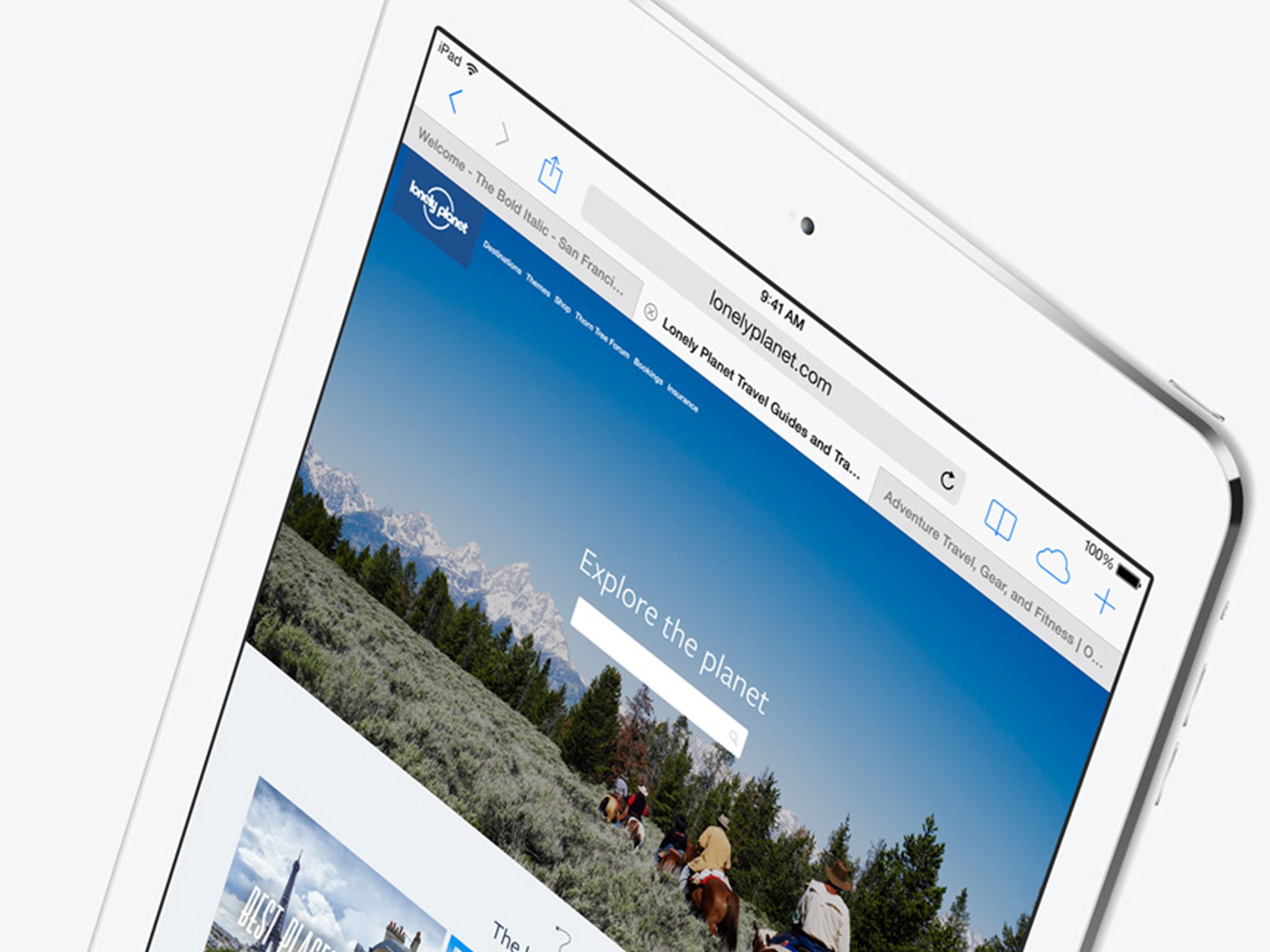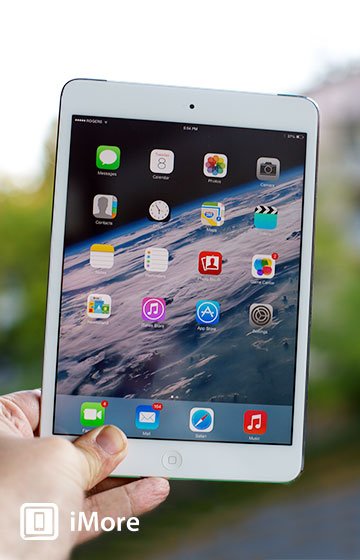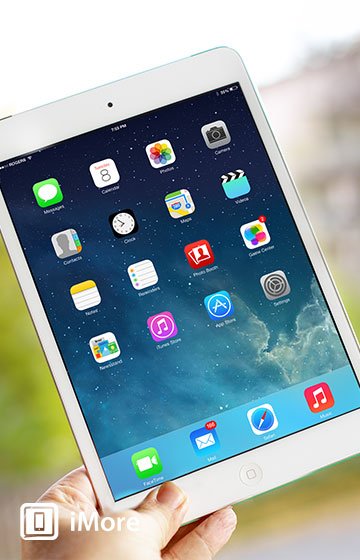
If you're in the U.S., Apple's new iPad Air and Retina iPad mini bring with them new choices for carriers. In addition to AT&T, Verizon and Sprint, T-Mobile is offering iPad service now. Coverage and cost are your two major factors, as well as LTE footprint, since all cell-equipped iPads support the technology. Which carrier is right for you?
Let's get down to business, looking at prices first.
iPad mini and iPad Air: Contract-free plans
All four carriers offer data plans for iPads with month-to-month, contract-free pricing. So if you are interested in choosing a different provider than you have for your cellular service, you can. You may also be interested in one of these plans if you are not on a "share everything" plan on AT&T or Verizon.
Quite frankly, each carrier has done their best to totally muddle the waters, so rather than break it down in charts, let me try to summarize:
- AT&T's basic plan is $14.99 a month for 250 MB. $30 gets you 3 GB, while $50 a month gets you 5 GB.
- Verizon offers 1, 2, 5 and 10 GB plans for $20, $30, $50 and $80 respectively.
Sprint offers a wide range of plans starting at a scant $5 (for a measly 25 MB per month - suitable for "emergency" e-mail use, but little more) and running up to $80 per month for 12 GB.
T-Mobile also accounts for tablets independently of phones. But the company's doing its best to be disruptive here, just as it has been in the smartphone market. When T-Mobile announced plans in late October to carry the iPad Air and iPad mini for the first time, the company also announced "Free Data for Life," which guarantees T-Mobile customers 200 MB of free data every month for as long as they own their iPad, even if they aren't yet a T-mobile customer.
T-Mobile's "always on" plans for iPad start at $10 per month for 500 MB of data. You can up your data limit in 2 GB increments for $10 a pop. T-Mobile is also introducing daily and weekly passes for customers who only occasionally need cell access on their devices - 500 MB for a day for $5, and weekly passes of unlimited data with 1 GB of 4G/LTE speeds for $10.
iPad mini and iPad Air: AT&T vs Verizon add-on plans
If you already have a "share everything" plan with AT&T or Verizon, you can add a tablet to your plan for another $10 per month. That's $10 per month more than you're paying now, plus the iPad draws from the pool of data you're already paying for. If you have an individual plan, this is not an option and you must use one of the above prepaid plans.
Neither Sprint nor T-Mobile will bundle your tablet with your smartphone plan. Tablet data plans are accounted for separately - see above for details.
iPad mini and iPad Air: LTE availability
In addition to price, you must also consider where each carrier offers coverage and if you're within that area. When it comes to coverage, the first thing you want to consider is LTE availability. LTE speed makes such a difference in data performance, this factor should weigh heavily on your decision.

Verizon has deployed LTE the fastest: they claim that 99 percent of their former 3G network now receives LTE coverage. However, customers in some areas are already complaining about network slowdowns, so Verizon has to stay on its toes by building out more capacity.

AT&T is building out their LTE network as fast as they can. Right now they have LTE available in almost 450 markets nationwide, with more to come. So if you're on AT&T and don't have LTE already, you should have it soon. AT&T also claims that their is the most reliable network, in terms of successful delivery rate of high-speed content.

Sprint is playing catchup here, but the company has spent 2013 accelerating its 4G LTE buildout as fast as it can. Sprint now has LTE available in 230 markets nationwide, and made a strong push this summer to grow that further. See those red dots on the map? They represent Sprint's 4G LTE footprint.

T-Mobile is in fourth place, but it's nipping at Sprint's heels. The company plans to have 200 markets with LTE coverage by the end of the year; and it only started to build out LTE coverage this past March. The company has also aggressively "refarmed" its network to improve its 4G footprint.
Obviously, all of this nationwide stuff is irrelevant if the coverage isn't good in your market. So here are some links to individual service providers' coverage maps. Check them yourself, and talk with friends, family members, coworkers and others about their experience with different services.
iPad mini and iPad Air: International traveling
The iPad Air and iPad mini with Retina Display both include support for GSM and CDMA, the two dominant network types in the US. GSM is used throughout Europe and CDMA exists in some parts of Asia, Mexico, parts of Latin America and elsewhere.
Check with your individual carrier to find out their international plan rates. In general, it's going to cost you quite a bit to get your iPad working abroad. One exception to that is T-Mobile - customers who have their "Simple Choice" plans now get unlimited data in more than 100 countries.
Depending on where you're traveling, how the duration of your trip, and your carrier, you may find that it's less expensive to buy a local carrier SIM once you get to the country you're visiting and buy a prepaid data plan instead.
Who should get their iPad Air or iPad mini on Verizon?
Verizon has the most ubiquitous coverage of any of the four major carriers. They've successfully transitioned the vast majority of their network to LTE. The company has its sights focused on improving capacity and reliability now that its transition to LTE is mostly complete. The adage "you get what you pay for" applies - you may pay a bit more to use Verizon, ultimately - however, if you're already a Verizon customer and you're using a shared data plan, you'll be able to add your tablet for $10 a month.
Who should get their iPad Air or iPad mini on AT&T?
AT&T has been investing heavily in rolling out their LTE network quickly. If they have good coverage in your area, they're a good option. And like Verizon, if you have a shared data plan with AT&T now, it's just $10 more per month to add your iPad to that pool.
Who should get their iPad Air or iPad mini on Sprint?
Sprint made a wrong turn with WiMax - a 4G networking technology that hasn't worked out very well - and it's cost them years. Now they're doing the same thing as everyone else, transitioning their network to 4G and LTE. But that rollout is far, far behind Verizon and AT&T. Still, if they're the best in your area, and their plans appeal to you, go with Sprint.
Who should get their iPad Air or iPad mini on T-Mobile?
T-Mobile is in fourth place, and that's causing them to take risks and cause as much disruption in the market as they can - hence their decision to give iPad customers absolutely free data, and to provide international travelers with free data access abroad. Their LTE is far behind their competitors, but the HSPA+ is very fast anyway. If you have great service with them, and like the plans they're offering, go with T-Mo.
iPad mini and iPad 5: Making the choice
So which carrier are you going to choose? Will you be ditching one carrier for another or sticking with the one you already have? Sound off in the comments below!
Retina iPad mini
The world's most popular tiny tablet goes Retina. Features include:
- Retina display
- A7 custom processor
- Improved LTE 4G support
- FaceTime HD camera
- iOS 7 software
iPad Air
Apple's full-sized iPad gets slimmed down. Features include:
- A7 custom processor
- Improved LTE 4G support
- FaceTime HD camera
- iOS 7 software
Released
November, 2013
Alternatives
Retina iPad mini, iPad 2
Replacements
iPad Air 2 (iPad 6)
Fall, 2014
Resources
Buyers guide
Help forum
Related Topics: Henry Bromell iOS 7 harry potter Rosh Hashanah 2013 whitney houston







কোন মন্তব্য নেই:
একটি মন্তব্য পোস্ট করুন